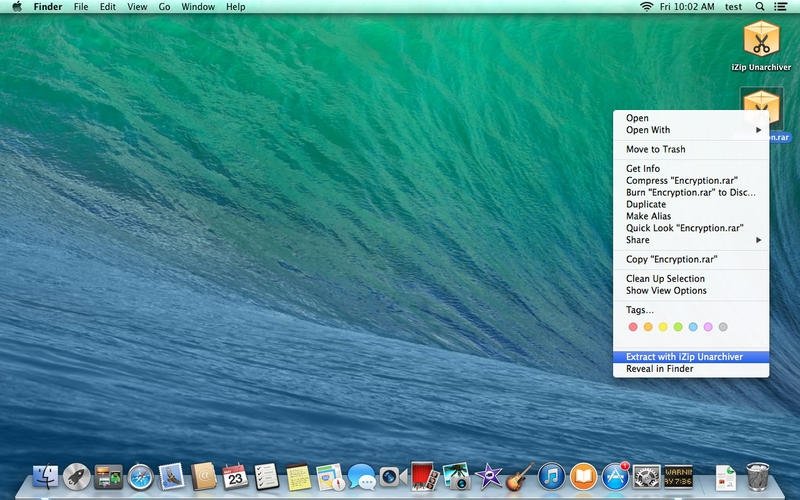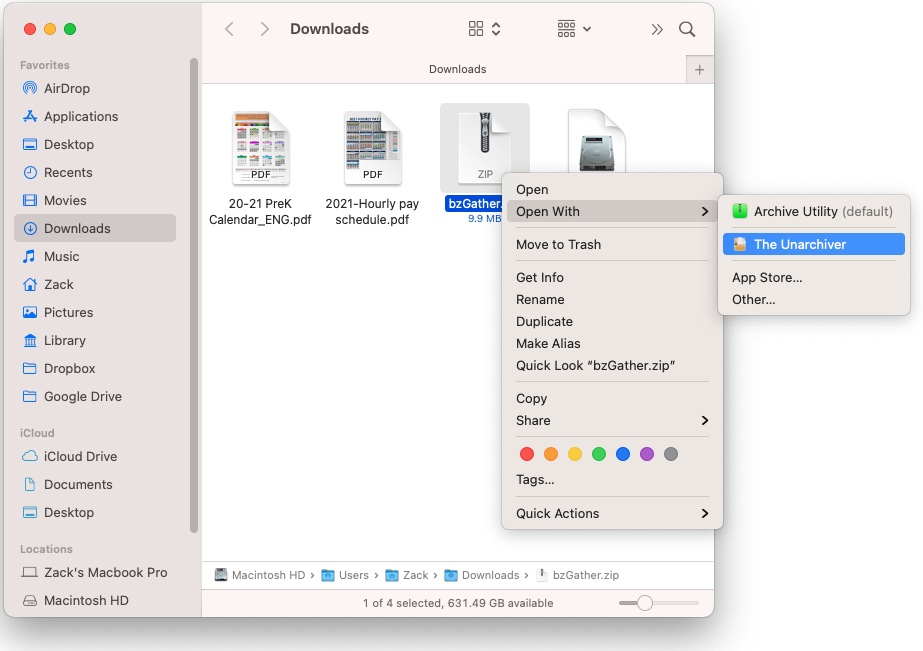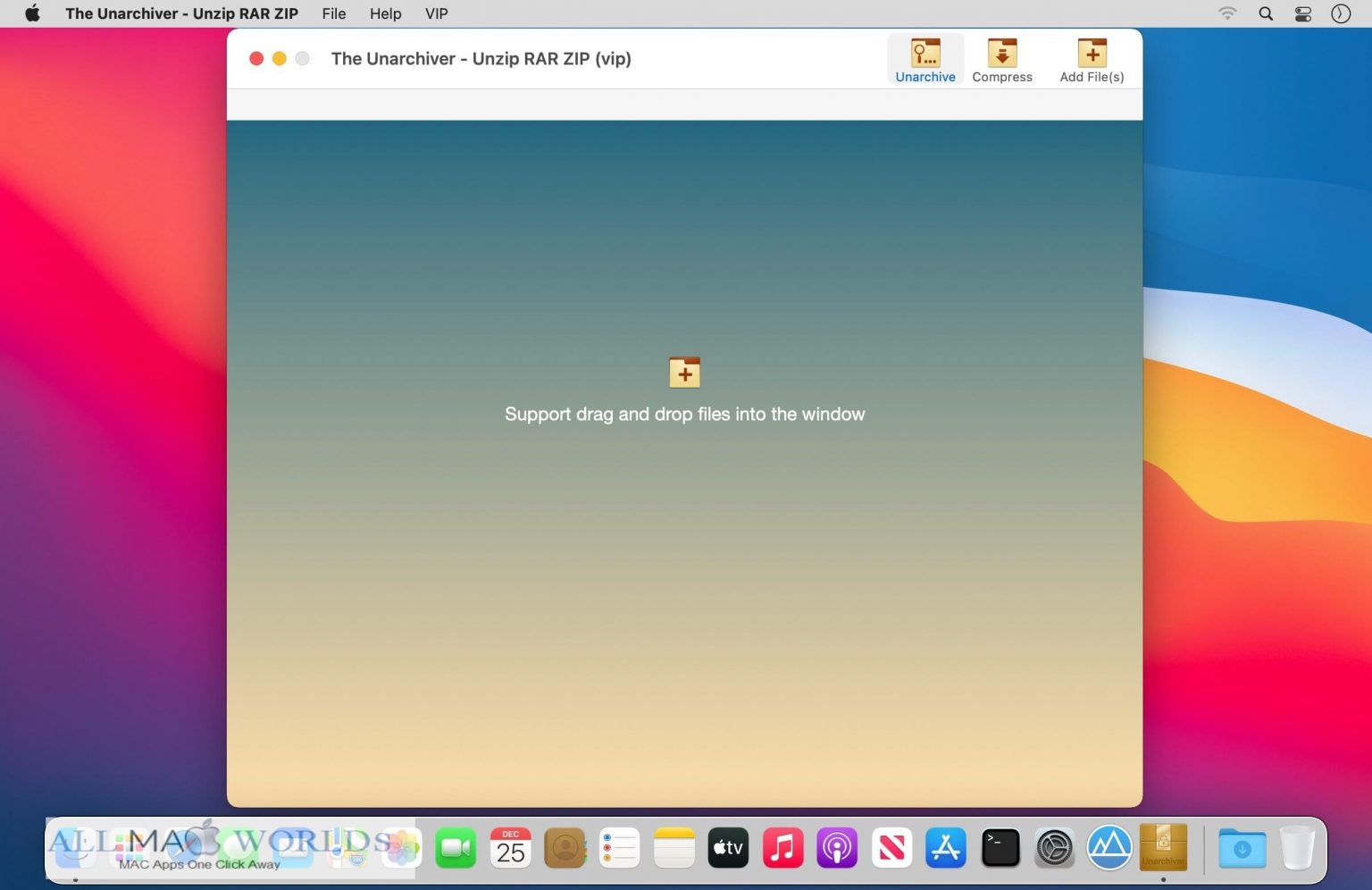

- COMPRESS THE UNARCHIVER MAC MAC OS X
- COMPRESS THE UNARCHIVER MAC MAC OS
- COMPRESS THE UNARCHIVER MAC ARCHIVE
- COMPRESS THE UNARCHIVER MAC VERIFICATION
Useful, for instance, if an application which is installed by the tar.gz file archives andĪllows you to extract individual files and folders out of them.
COMPRESS THE UNARCHIVER MAC MAC OS
Pacifist is a shareware application that opens Mac OS X. Possible with its built-in unrar engine, or otherwise by launching the
COMPRESS THE UNARCHIVER MAC VERIFICATION
After the verification step, MacPAR deLuxe unpacks the data. MacPAR deLuxe can recover missing information by processing so called It verifies that the file set is complete, and all files are undamaged. Often, binary content comes in the form of sets of many files that Is useful to you if you download (or upload) binary files from internet MacPAR deLuxe is a utility program that runs on the Apple Macintosh.
COMPRESS THE UNARCHIVER MAC MAC OS X

Their contents may be accessed using the DiskĬopy application that's included with Mac OS X. Unlike other formats, disk images preserve both long filenamesĪnd Mac and Unix metadata. They are Apple's preferred format for distributing Mac OS X dmg format.ĭisk images are a wonderful way of packing entire folders or disks intoĪ single file, either for transport across the Internet or simply forĪrchival.
COMPRESS THE UNARCHIVER MAC ARCHIVE
TXZ, 7-ZIP, XAR, and - using the external commandline utility - RAR.īetterZip can currently open and extract over 30 archive formats Both Archive Utility and the zip command line utility discard ACLs.BetterZip can create archives with these formats: ZIP, TAR, TGZ, TBZ, xattr also includes resource forks and file flags, because even though they are not actually stored as extended attributes, they can be accessed through the extended attributes interface. Normally you can just discard the OS X-specific metadata, but to see what metadata files contain, you can use xattr -l. The zip command line utility discards metadata such as extended attributes, file flags, and resource forks, which also means that metadata such as tags is lost, and that aliases stop working, because the information in an alias file is stored in a resource fork. _ that are used to store OS X-specific metadata. The _MACOSX directory contains AppleDouble files whose filename starts with.

The top level file of a zip archive with multiple files should usually be a single directory, because if it is not, some unarchiving utilites (like unzip and 7z, but not Archive Utility, The Unarchiver, unar, or dtrx) do not create a containing directory for the files when the archive is extracted, which often makes the files difficult to find, and if multiple archives like that are extracted at the same time, it can be difficult to tell which files belong to which archive.Īrchive Utility only creates a _MACOSX directory when you create an archive where at least one file contains metadata such as extended attributes, file flags, or a resource fork. DS_Store files inside directories but -x \*.DS_Store does. $ unzip -l a\ 2.zip # I created `a 2.zip` from Finder before this In the output below, a.zip which I created with the zip command line utility does not contain a _MACOSX directory, but a 2.zip which I created from Finder does. The zip command line utility never creates a _MACOSX directory, so you can just run a command like this: zip directory.zip -x \*.DS_Store -r directory


 0 kommentar(er)
0 kommentar(er)
